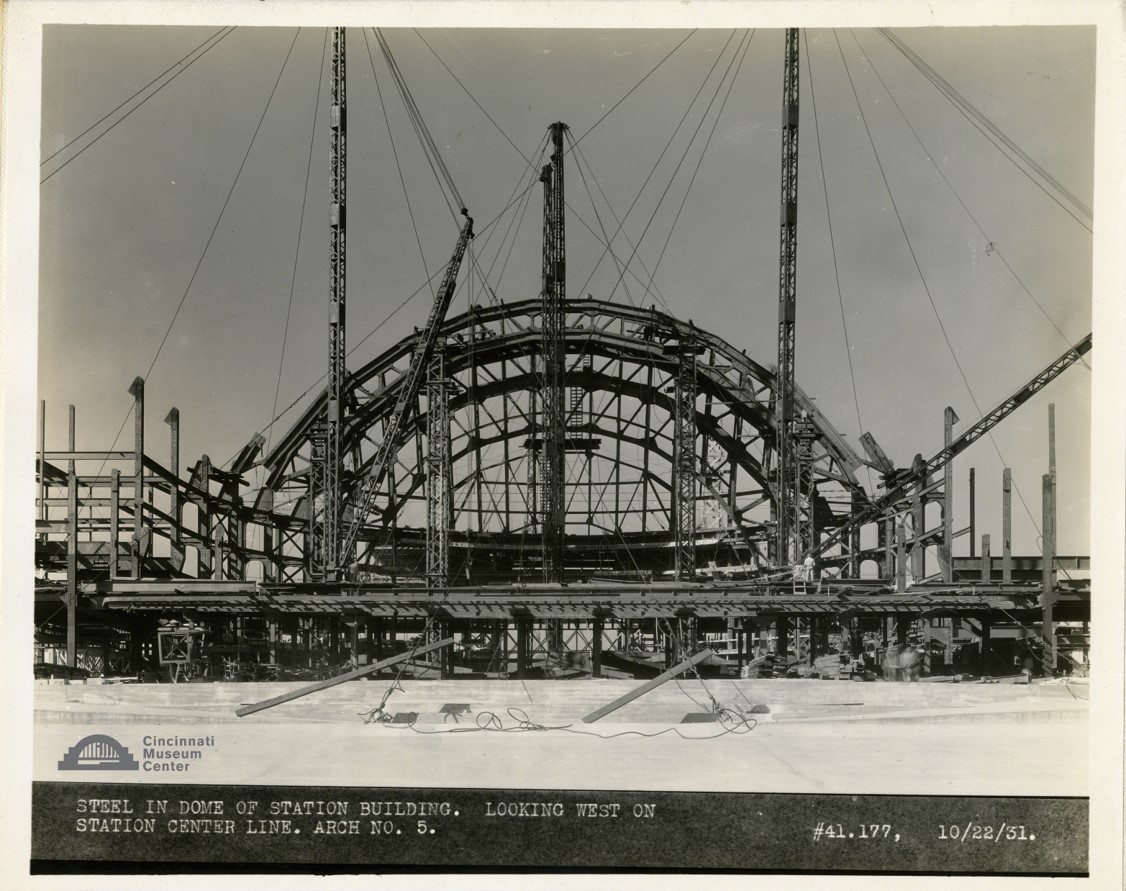
About Union Terminal
Cincinnati Union Terminal was a significant development in the history of Cincinnati transportation.
One of the last great American train stations built, Union Terminal is a Cincinnati icon and one of the most widely regarded examples of the art deco style. Since its opening in 1933, Union Terminal has had a long and storied history, from welcoming soldiers home from World War II to becoming the home of three museums, an OMNIMAX® Theater and the Cincinnati History Library and Archives.
After you pick your jaw up off the floor from admiring the largest half-dome in the western hemisphere, ask a member of guest services about the magical whispering fountains. Spend some time admiring the intricate details and stories of the Winold Reiss mosaics and visit Tower A, the original control tower of Union Terminal. Be sure to pick up a sweet treat in the Rookwood-tiled ice cream parlor before heading outside to enjoy it next to the fountain with a unique view of downtown Cincinnati.
Union Terminal completed a historic restoration in 2018.



Quick Facts
- Work on Union Terminal started in August 1929 and was completed on March 31, 1933.
- Union Terminal cost $41 million, including the purchase of the ground and the readjustment of railroad facilities.
- The Union Terminal complex, including the rail yards and supporting structures, takes up an area of 287 acres and includes 94 miles of track.
- The Union Terminal complex originally was composed of 22 distinct buildings whose construction required 224,534 cubic yards of concrete, 100,500 square yards of paving, 8,250,000 bricks and 45,421 net tons of steel.
- The Cincinnati Union Terminal Company, the Baltimore & Ohio Railroad and the City of Cincinnati built the Western Hills Viaduct, which spans the rail yards, for a cost of $3.5 million.
- The viaduct is 3,500 feet long of which 2,800 feet is double-deck construction.
- The Rotunda's interior dome spans 180 feet, with a height of 106 feet.
- The station was designed to accommodate 17,000 passengers and 216 trains a day.
- Passenger train service ceased at Union Terminal on October 28, 1972, and resumed on July 29, 1991, when Amtrak began operating at Union Terminal.
- Fifteen local businesses were represented in the industrial mosaics in the train concourse: piano manufacturing (Baldwin Piano Co.); radio broadcasting (Crosley Corp.); roof manufacturing (Philip Carey Co.); leather production (American Oak Leather Co.); airplane manufacturing (Aeronca Company); ink making (Ault & Weiborg Corp.); laundry-machinery manufacturing (American Laundry Machine); meat packing (E. Kahn & Sons); pharmaceutical production (William S. Merrill Co.); printing (U.S. Playing Card Co. and Champion Paper Co.); steel manufacturing (American Rolling Mills [Armco]); rolled steel manufacturing (Andrews Steel Company and Newport Rolling Mill); soap making (Procter & Gamble Co.); and machine tools manufacturing (Cincinnati Milling Machine).
Museum Admission
Includes Cincinnati History Museum, Museum of Natural History & Science and The Children's Museum
| Adult: | $22.50 |
| Senior: | $15.50 |
| Child: | $15.50 |
| Member Adult: |
FREE |
| Member Child: |
FREE |
Members receive discounts!
Become a Member today to save on programs, exhibits and films throughout CMC.
Museum Hours
Open Thursday – Monday
10 a.m. to 5 p.m.
Closed Tuesday and Wednesday
Closed Thanksgiving Day and Christmas Day
Member’s-only early entry: Saturdays at 9 a.m.
Customer Service Hours:
Monday – Sunday, 9 a.m. to 5 p.m.

